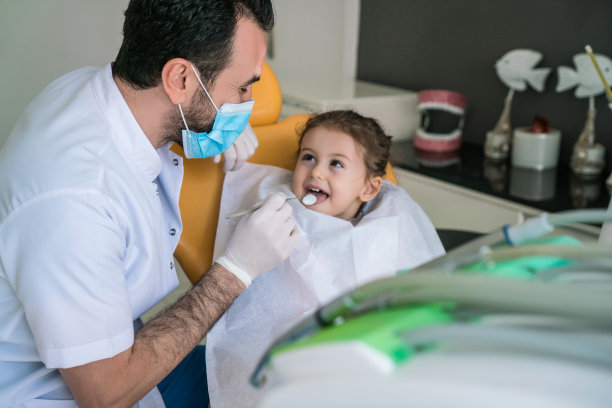The Essential Guide to Understanding the Process and Importance of Extracting a Tooth for Better Dental Health
Summary: Extracting a tooth, while often viewed with apprehension, plays a crucial role in enhancing dental health. This article serves as a comprehensive guide to understanding not only the process of tooth extraction but also its importance in maintaining optimal oral hygiene. We will explore the reasons leading to tooth extraction, review the actual procedure, understand the post-extraction care needed, and discuss the long-term benefits of this dental practice. By shedding light on these aspects, we hope to alleviate fears and promote a better understanding of why tooth extraction can be a necessary step towards achieving better overall dental health.
1. Common Reasons for Tooth Extraction

Tooth extraction is often a last resort, but it is sometimes necessary for various reasons. One common reason is dental decay. When a tooth is extensively decayed and cannot be restored with a filling or crown, extraction may be required to prevent further oral health issues. This is crucial because decayed teeth can lead to pain, infection, and even spread bacteria to other teeth.
Another reason for extraction is periodontal disease. This condition affects the gums and the supporting structures of the teeth, leading to tooth mobility. If a tooth becomes too unstable due to advanced gum disease, dentists may recommend extraction to save surrounding teeth and maintain overall gum health.
Overcrowding is yet another valid reason for tooth extraction. In some cases, there may not be enough space in the mouth for all teeth to align properly. Dental professionals may suggest removing a tooth to facilitate orthodontic treatment, ensuring a straighter and healthier smile.
2. The Extraction Procedure Explained
Understanding the tooth extraction procedure can help reduce anxiety associated with the process. The first step involves a thorough examination and possibly X-rays to assess the tooths condition and its surrounding structures. Dentists will review the findings and explain the procedure, ensuring the patient is well-informed.
Once the preparation is complete, the extraction itself begins. Local anesthesia is administered to numb the area around the tooth, ensuring the patient experiences minimal discomfort. In some cases, general anesthesia might be used for more complex extractions, such as impacted wisdom teeth.
After the anesthesia takes effect, the dentist utilizes specialized tools, such as elevators and forceps, to carefully remove the tooth from its socket. Depending on the tooths position and type, this can range from a simple extraction to a more surgical one. Post-extraction, the dentist may provide instructions on how to care for the extraction site to promote healing.
3. Essential Post-Extraction Care Tips
Post-extraction care is critical to ensure a smooth recovery. Immediately after the procedure, patients are advised to bite down gently on a gauze pad placed over the extraction site. This helps control bleeding and aids in the initial clot formation, which is crucial for healing.
For the first 24 hours post-extraction, its recommended to avoid spitting, rinsing, or sucking objects, as these actions can dislodge the clot and lead to a painful condition known as dry socket. Pain management is also an essential aspect; dentists often provide prescription or over-the-counter pain relievers to ensure comfort during the recovery phase.
Patients should be mindful of dietary choices post-extraction. Initially, soft foods and liquids are recommended to prevent any irritation to the extraction site. Gradually, as healing progresses, one may reintroduce solid foods, but avoiding hard, crunchy, or sticky foods is advisable until the area is fully healed.
4. Long-term Benefits of Tooth Extraction
The long-term benefits of tooth extraction extend far beyond the immediate relief it can provide. By removing problematic teeth, patients can prevent the development of more severe dental issues, such as infections and misaligned teeth. This proactive approach leads to a healthier oral environment and can contribute to overall well-being.
Furthermore, tooth extraction can open the door for orthodontic treatment. Creating space within the mouth often results in better alignment of the remaining teeth, enhancing both functionality and aesthetics. A proper bite can significantly decrease the risk of wear and tear on teeth, leading to improved long-term dental health.
Additionally, extraction can have a positive psychological impact on patients who may have been self-conscious about visible decay or overcrowded teeth. By addressing these concerns, individuals often feel more confident and willing to maintain a robust oral hygiene routine that promotes a healthy smile for years to come.
Summary:
In conclusion, understanding the process and importance of tooth extraction can help demystify the procedure and underscore its necessity in maintaining dental health. Whether due to decay, periodontal disease, or overcrowding, extractions are conducted with the goal of preserving overall mouth health and well-being. With proper care and consideration after the procedure, patients can enjoy significant long-term benefits, making tooth extraction not only a solution but a pathway to a healthier smile.
This article is compiled by Vickong Dental and the content is for reference only.


